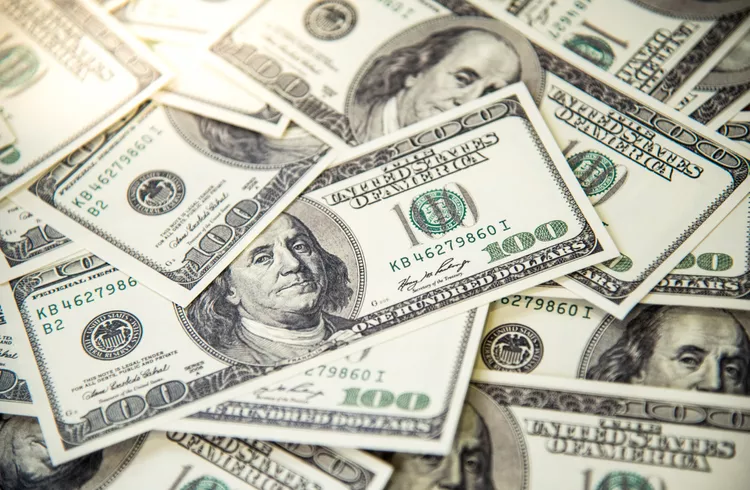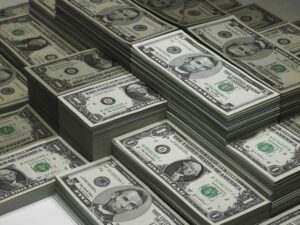
Dollar Strengthens as Investors Await Key U.S. Economic Data

The U.S. dollar edged higher on Tuesday, holding near a two-week peak, as investors anticipate crucial economic reports, including Friday’s U.S. payroll data. This data could significantly impact the Federal Reserve’s decision on the size of an expected interest rate cut.
Euro and Sterling Weaken Against the Dollar
The euro slipped 0.16% to $1.1055, close to the previous session’s two-week low of $1.1042, while the British pound eased 0.17% to $1.3124. These movements left the dollar index, which tracks the U.S. currency against six major rivals, up 0.11% at 101.77, just below the two-week high of 101.79 reached on Monday. The index had dropped 2.2% in August due to expectations of U.S. rate cuts.
Focus on U.S. Payrolls Data and Fed’s Interest Rate Decision
Investors are closely watching this week’s U.S. payrolls data, which follows Fed Chair Jerome Powell’s recent endorsement of potential interest rate cuts amid labor market concerns. Additionally, job openings data on Wednesday and the jobless claims report on Thursday will attract significant attention.
According to the CME FedWatch tool, there is a 69% chance of a 25 basis point (bps) cut at the upcoming Fed meeting on September 17-18, with a 31% probability of a 50-bps cut. The outcome of this week’s labor data could be pivotal in determining the final decision.
Charu Chanana, Head of Currency Strategy at Saxo, noted, “If the data remains strong, a 25 bps cut is more likely. However, a weaker non-farm payroll report, especially if it falls below 130,000 jobs with a rising unemployment rate, could sway the market towards a 50 bps cut.”
Economists polled by Reuters expect the U.S. to add 165,000 jobs in August, up from 114,000 in July.
U.S. Economic Growth Remains Strong Amid Disinflation
Win Thin, Global Head of Market Strategy at Brown Brothers Harriman, emphasized that recent data confirms the U.S. economy’s resilience, driven by robust consumer spending despite gradual disinflation. Last week’s data revealed that the personal consumption expenditures (PCE) price index, the Fed’s preferred inflation measure, rose 0.2% in July, aligning with economists’ expectations. This keeps the central bank on track for a gradual rate cut.
“We’re in a ‘Goldilocks’ moment, and we believe the Fed will begin cutting rates gradually this month,” Thin added. Markets are currently pricing in 100 bps of cuts across the Fed’s remaining three meetings this year.
Treasury Yields and Yen Movements
The 10-year Treasury yields remained steady at 3.915% as trading resumed in Asia after a U.S. holiday on Monday. Meanwhile, the Japanese yen rose 0.3% to 146.50 per dollar but stayed near the two-week low of 147.16 reached on Monday. Analysts attributed this movement to an unwinding of Monday’s drop, which occurred during thin liquidity in U.S. markets.
Australian and New Zealand Dollars Decline Ahead of GDP Report
The Australian dollar fell 0.8% to $0.6737 ahead of Wednesday’s GDP report, after gaining 3.5% in August. The New Zealand dollar also slipped 0.75% to $0.61875, following a 5% surge last month.
For the latest updates on forex trends and insights, stay tuned to our website.
Never miss any important news. Subscribe to our newsletter.
Related News


USD/INR Slows Down Amid Mixed Indian PMI Data.


USD/INR Rises as Markets Anticipate Fed Rate Decision.


Gold Price Nears Record High Amid Strong Safe-Haven Demand.



USD/INR Gains Momentum Amid Trade Tariff Uncertainty.



Never miss any important news. Subscribe to our newsletter.
Editor's Pick


USD/INR Slows Down Amid Mixed Indian PMI Data.


USD/INR Rises as Markets Anticipate Fed Rate Decision.



